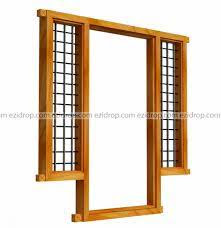Understanding Replacement Window Ratings Will Help You Get the Right Window For Your Climate
Replacement Window scores are necessary for you as a house owner when shopping for replacement windows. By using the released performance scores, it will allow you to make an apples to apples contrast in between the various replacement windows you are deciding upon for your task.
WindowGallerynb.com is a Window & Door Installation firm in NJ. Contact for Window replacement, Glass doors, windows Andersen, doors, French Doors, sliding Door in Jew Jersey USA.
As a customer it is important to understand precisely what replacement window ratings are important, what the replacement window rankings suggest, and how to figure out the very best replacement window scores for your project. The information below will provide you a better understanding of each element of the score process.
Who Figures Out the Replacement Window Scores?
The National Fenestration Score Council (NFRC) is an organization developed by the companies within the window, door and skylight community. The council relies on input from providers, home builders, architects, makers, federal government companies, and numerous other entities to assist in the window scores creation process. The replacement window rankings system developed by the NFRC is based upon overall product performance.
Every window that is licensed to the NFRC requirements will include an NFRC label on the product. This label supplies the only specific method to determine a window's energy homes and make product comparisons between windows. The NFRC label will likewise be discovered on all items which belong to the ENERGY STAR program.
There are four primary replacement window scores that the NFRC uses to determine the window efficiency, U-factor, Solar Heat Gain Coefficient, Visible Light Transmittance, and Air Leak. In the future a 5th window ranking will be included: Condensation Resistance.
Replacement Window Rankings Definitions
The following sections specify in greater detail each of the window rankings that the NFRC utilizes to determine the performance of windows.
U-factor
The rate of heat loss is indicated in terms of the U-factor (U-value) of a window assembly. Since it is a measure of heat loss through the window, the lower the U-value, the better the window will perform. When you are purchasing replacement windows make certain to talk in regards to the U-Value and not the R- Value of the windows.
R-Values are a step of how well something insulates and is typically used to judge the efficiency of insulation in your walls. The insulating worth is suggested by the R-value which is the inverse of the U-value. The lower the U-value, the higher a window's resistance to heat flow and the much better its insulating worth.
Solar Heat Gain Coefficient (SHGC).
The official definition of the Solar Heat Gain Coefficient is as follows: The SHGC is the portion of occurrence solar radiation admitted through a window, both admitted through a window, both directly transferred, and soaked up and consequently launched inward. SHGC is expressed as a number between 0 and 1. The lower a window's solar heat gain coefficient, the less solar heat it sends.
In layperson's terms solar heat gain is the very same feeling you get when you stand in the sun for an extended duration of time. After time your body has taken in the sun's glowing heat and you have in essence "gained" the sun's heat.
The exact same concept applies to the windows in your house. As the sun beats down on your windows, the windows will start to soak up heat gain. If the SHGC is high on your window, the heat passes right on through and starts to raise the "body temperature level" of your home.
By having a window with a low SHGC, you prevent the convected heat from having the ability to travel through the window keeping the within the house cooler in the warm summer season. SHGC is the more important in Southern environments than it remains in Northern because of the sun's ruthless heat.
Noticeable Transmittance (VT).
The noticeable transmittance (VT) is an optical property that shows the amount of visible light transferred. The NFRC's VT is an entire window ranking and includes the impact of the frame which does not send any visible light.
Select windows with a higher VT to optimize daytime and view.
Air Leakage (AL).
Heat loss and gain happen by infiltration through fractures in the window assembly. It is suggested by an air leak score (AL) revealed as the equivalent cubic feet of air passing through a square foot of window location. The lower the AL, the less air will travel through fractures in the window assembly.
At this time, the AL is optional. It is good to select replacement windows that have a very low air infiltration ranking. Windows with a greater air leak window ranking will let the heating or cooling out of the house. This will result in a "drafty" window and less energy effectiveness. Select windows with an AL of 0.30 or less (systems are cfm/sq feet).
Comprehending replacement window ratings is simply the beginning of your research. Where you live will depend will effect which ranking you want to focus on to maximize the energy performance of your windows. To find out more on what rankings you need to pick relying on your climate, feel free to find out more at the window ratings page.
Address:
Window Gallery in North Bergen
603 Kennedy Blvd., North Bergen, NJ 07047
Tel: 201-866-1987




Comments
Post a Comment